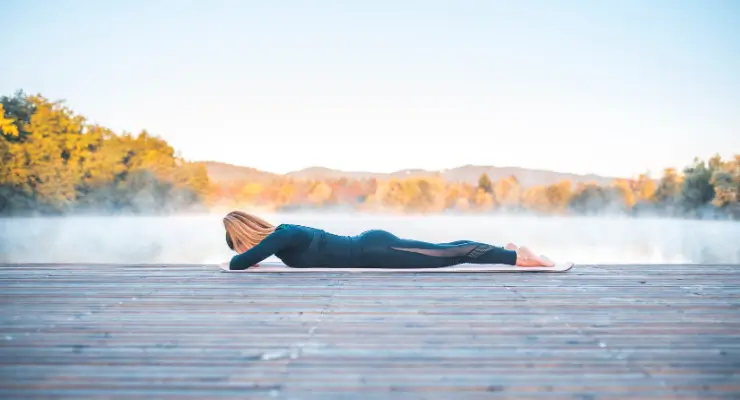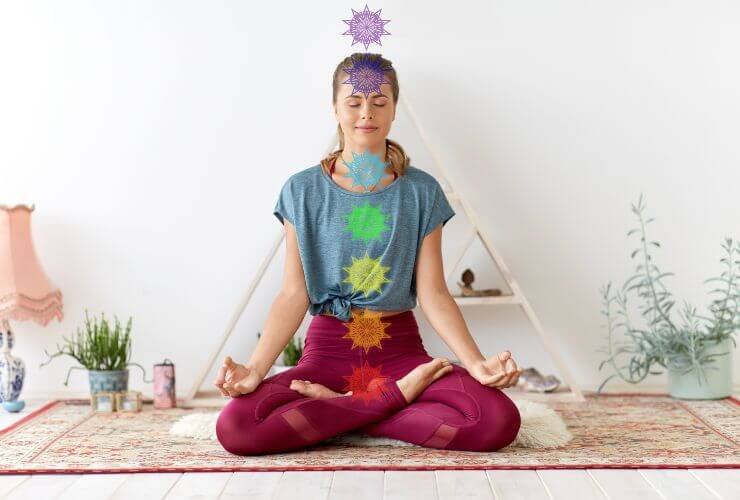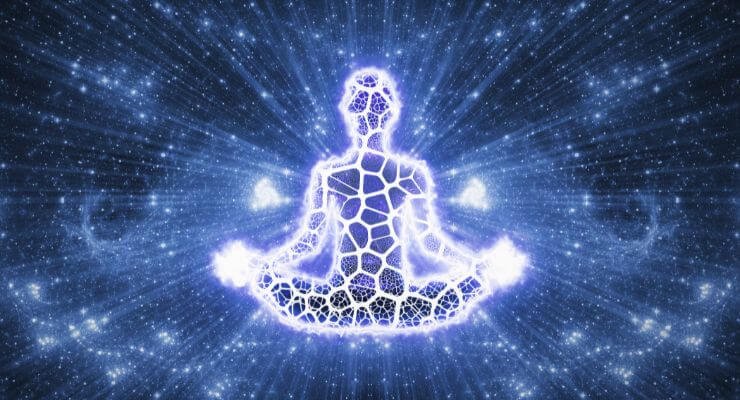Makarasana, or Crocodile Pose, is a gentle restorative yoga posture that focuses on relaxation, stress relief, and improved breathing.
It’s suitable for beginners and offers valuable balance and emotional connection for more experienced practitioners.
This pose targets various muscle groups including the back, abdomen, shoulders, and arms, promoting relaxation of the upper body tension and lower back pain, and improving posture.
How to Perform Makarasana
- Start Position: Begin by lying on your belly with your legs extended and your toes pointing outward. Your arms should be folded with your elbows on the ground and palms facing forward.
- Raising the Neck and Shoulders: Gently raise your neck and shoulders, creating a gap between your elbows. Place your palms beneath your chin.
- Relaxing into the Pose: Adjust your legs outward for comfort, feeling the ground’s support. Focus on relaxing your entire body, maintaining the posture as long as it is comfortable.
- Exiting the Pose: To release, gently remove your hands, lower your head, and transition into Savasana (Corpse Pose) for a few minutes of relaxation.
Precautions and Contraindications
Practitioners with serious back injuries, cervical spondylitis, or pregnant women should avoid or modify this pose due to its prone position, which could put pressure on the abdomen or exacerbate existing conditions.
Benefits of Makarasana
Makarasana offers multiple benefits, including relieving back pain and enhancing the mental state by activating the Parasympathetic nervous system, thereby reducing stress and anxiety.
It also regulates blood flow, aids in respiratory issues like asthma, and improves muscular endurance and flexibility.
The prone position supports meditation and pranayama practices, aids digestion, and has been suggested to help manage diabetes by rejuvenating insulin-producing cells in the pancreas.
Variations and Modifications
Variations include propping the torso up with elbows under the shoulders, raising the head and shoulders with the chin resting on palms, or spreading the legs wider apart.
These modifications can help tailor the pose to individual needs and goals, whether for relaxation, spinal stretch, or shoulder and core strengthening.
Makarasana, with its focus on relaxation and breathing, serves as a powerful tool in the yoga practice for restoring balance and tranquility. It’s a reminder of the importance of rest and recovery in any physical activity regimen.





